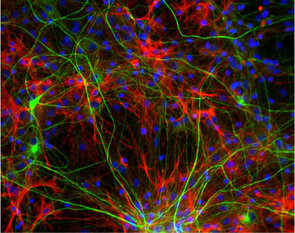 Jeff Rosen’s article, The Brain on the Stand, in the March 11, 2007 issue of The New York Times Magazine explores how neuroscience (e.g. brain scans) is challenging our legal system. Imagine using a brainscan rather than a polygraph to tell if someone is lying. I like to highlight the questions that such technological breakthroughs raise and then set forth some precautions as we move forward into learning to use new tools.
Jeff Rosen’s article, The Brain on the Stand, in the March 11, 2007 issue of The New York Times Magazine explores how neuroscience (e.g. brain scans) is challenging our legal system. Imagine using a brainscan rather than a polygraph to tell if someone is lying. I like to highlight the questions that such technological breakthroughs raise and then set forth some precautions as we move forward into learning to use new tools.
The big question is: “What impact does a defective brain have on personal responsibility? Is personal responsibility any less if I say “My amygdala made me do it,” or “My unhappy childhood predetermined me,” or “My genes made me do it,” or “The devil in me made me do it?” I think brain defects should have little bearing on the verdict, but it should play a huge role in the sanctions (or rehabilitation).
Another question that suggests more practical potential is, “Can a brain scan tell more accurately than a polygraph if someone is telling the truth?” Two companies, No Lie MRI, and Cephos are competing now to get the accuracy past the 80-90% accuracy of current polygraph technology into the 90-95% accuracy.
A question that really bothers me is, “Can brain scans be used in jury selection by predetermining those who make judgments analytically versus emotionally?” A subset of this is, “Can a person’s inclination toward racial bias be measured with a brain scan?” On the law-breaker side of the fence, “Can persons be found guilty for what they think rather than what they do?”
I side with Stephen Morse, Professor of law and psychiatry at the University of Pennsylvania who believes that neuroscience is just another material, causal explanation of human behavior, and says “Brains do not commit crimes; people commit crimes.”
I just heard a lecture today at a CAPS Conference by Dr. Paul Vitz who offered a structure than puts this into proper perspective. In brief, Vitz offers at least six levels of explaining observations of human functioning, from primitive to complex, from mechanistic to transcendent: (1) biological, (2) neurological, (3) behavioral, (4) psychological, (5) philosophical and (6) theological. I may not have remembered the details accurately, but the point is that every level is involved in every other level and any detailed contribution of one level necessarily leaves out some details from the other levels. So when we look at neuroscience, we must remember that we are looking at a single primitive level of observation. In no way can these observations be seen as completely determinative.
When my father was teaching me to use a power saw, he was very careful to show me how to use it respectfully so I wouldn’t cut off a finger. May we use the new tools of neuroscience with humility and respect so we don’t do more harm than good.



 Posted by leejagers
Posted by leejagers 




